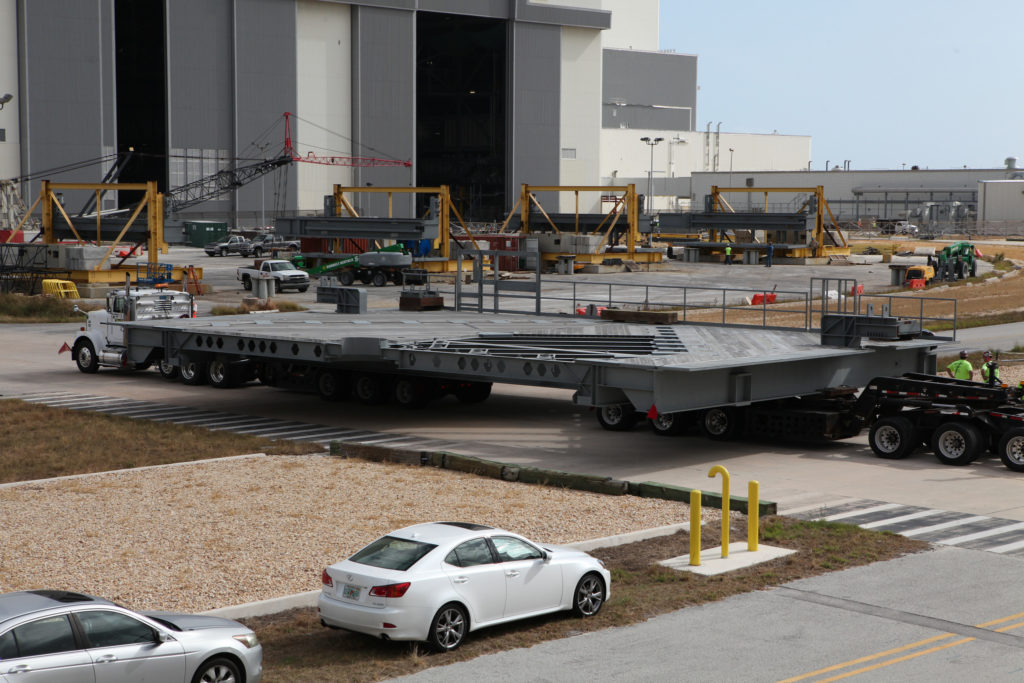
A demonstration of the automated command and control software for NASA’s Space Launch System (SLS) rocket and Orion spacecraft, recently took place in Firing Room 3 in the Launch Control Center at the agency’s Kennedy Space Center in Florida. The software, called the ground launch sequencer, will be responsible for nearly all of the launch commit criteria during the final phases of launch countdowns.
The Ground and Flight Application Software Team, or GFAST, demonstrated the software for Charlie Blackwell-Thompson, launch director for the first integrated flight of the SLS and Orion spacecraft. Also attending were representatives from the NASA Test Director’s Office.
The software is in the advanced stages of development. It includes nearly all of the core capabilities required to support the initial use during Ignition Over-Pressure / Sound Suppression and follow-on tests through launch of the agency’s SLS rocket and Orion spacecraft. The suppression stage ensures the water dampening system initiates in the final second of launch countdown. It also produces the pattern and volume needed to dampen the pressure waves and acoustic environment caused by the firing of the SLS core stage RS-25 engines and solid rocket motors.
“We were pleased to be able to demonstrate the continued evolution of the ground launch sequencer for members of the launch team, and look forward to its first use in operations support,” said Alex Pandelos, operations project engineer for Launch Integration in the Ground Systems development and Operations Program (GSDO).
The software was developed by GSDO’s Command, Control and Communications teams at the center. Development of the software will continue, with a goal of beginning verification and validation of the software in summer 2017.









